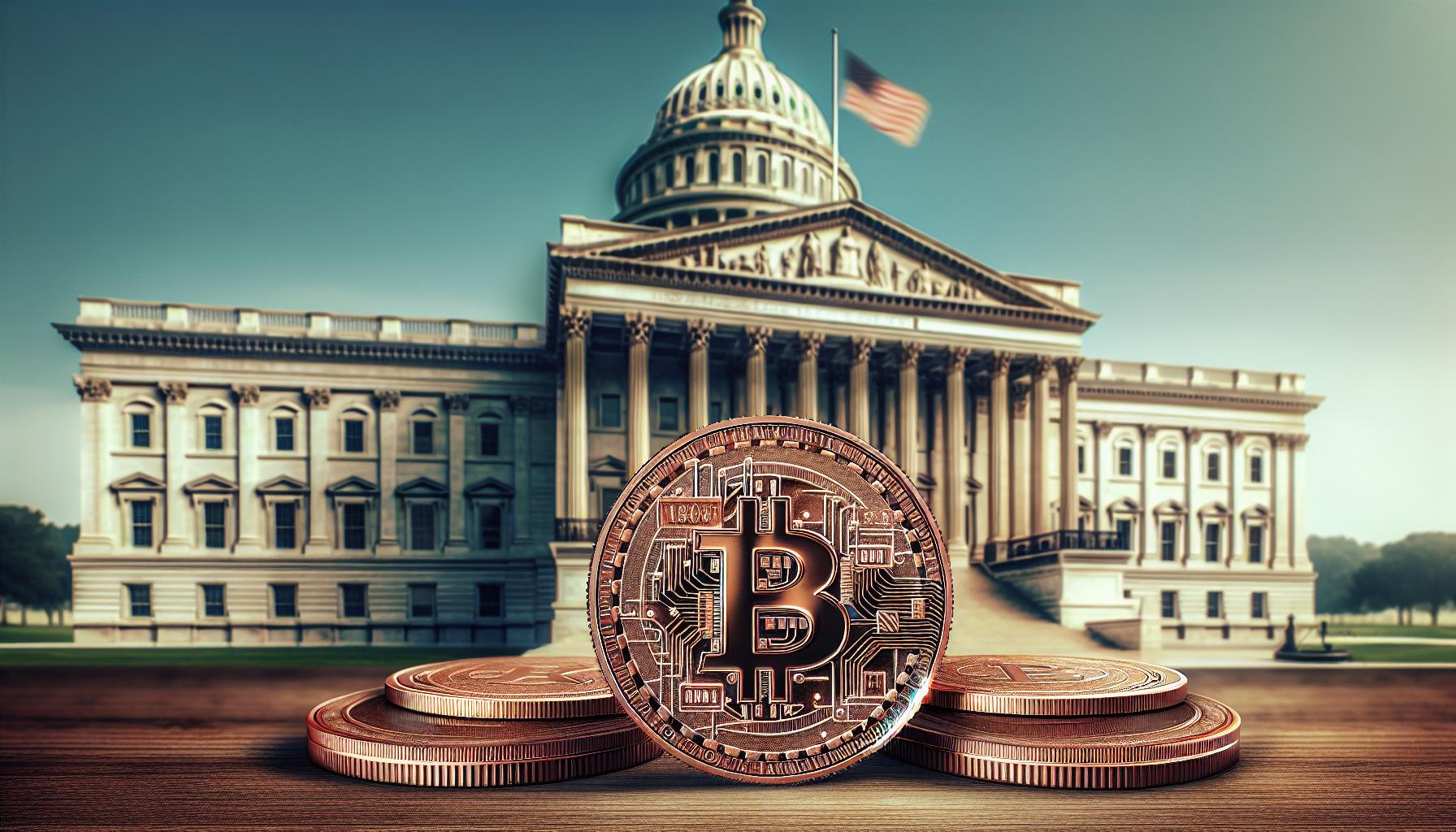Cryptocurrency continues to captivate the world, and its influence on global economies is undeniable. As digital currencies gain momentum, political figures are increasingly weighing in on their potential impacts. One such figure is Donald Trump, whose stance on cryptocurrency has sparked considerable interest and debate.
You might wonder what Trump’s crypto plan entails and how it could shape the future of digital finance. His views and proposed policies could significantly influence the regulatory landscape and the broader acceptance of cryptocurrencies. Whether you’re an investor, a policymaker, or simply curious about the digital currency realm, understanding Trump’s perspective is crucial.
As the conversation around cryptocurrency evolves, staying informed about influential voices like Trump’s can help you navigate this rapidly changing financial frontier. Dive into the intricacies of his crypto plan to grasp its potential implications for the industry and beyond.
Key Takeaways
- Donald Trump’s crypto plan focuses on enhancing national economic security through more stringent regulations for digital currencies, aiming to balance consumer protection with innovation.
- Key elements of the plan include increased oversight on cryptocurrency transactions and fostering a regulatory environment that could boost transparency and attract institutional investors.
- The plan’s potential economic impact suggests that supporting cryptocurrency innovation could enhance domestic industry efficiency and contribute to GDP growth.
- The crypto community remains divided on Trump’s plan, with supporters welcoming regulatory clarity and critics fearing overregulation might stifle innovation and push activities overseas.
- Comparing Trump’s policies to previous regulations reveals a significant shift towards stricter oversight, potentially increasing market transparency and influencing mainstream adoption.
- Experts advise that while enhanced regulation may stabilize market conditions, it could also present challenges, such as higher operational costs and a possible pushback from the crypto industry.
Overview Of The Trump Crypto Plan
Donald Trump’s crypto plan has garnered attention in both financial markets and political spheres. This interest stems from his past statements regarding the regulatory framework for digital currencies. Central to this plan is a focus on enhancing national economic security through stringent regulations. Trump’s approach includes increasing oversight on cryptocurrency transactions to combat illicit activities and ensuring compliance with existing financial regulations.
A key element is the emphasis on creating a balanced regulatory environment. The plan aims to protect consumers from potential risks while fostering innovation within the digital asset space. To implement these changes, Trump’s strategy suggests collaboration with financial institutions and tech experts to develop a cohesive policy. This aims to limit volatility and boost transparency in the crypto market.
Any changes proposed under Trump’s crypto plan could significantly reshape the regulatory landscape, which impacts global cryptocurrency acceptance. For investors and policymakers, staying updated on these developments is crucial in navigating the evolving digital finance world.
Key Elements Of The Plan

Trump’s crypto plan emphasizes a streamlined approach for integrating digital currencies into the national economy. This strategy involves several key elements.
Economic Impact
The plan outlines potential economic benefits from embracing cryptocurrencies. By facilitating blockchain innovation, domestic industries could see increased efficiency and global competitiveness. Projections indicate that supporting crypto can contribute to GDP growth. If implemented correctly, these strategies might bolster economic resilience against market volatility.
Regulatory Changes
Trump’s regulatory framework seeks to enhance oversight on digital transactions. Stricter guidelines aim to reduce risks associated with money laundering and cybercrime. His proposals include tightening existing regulations while collaborating with international bodies to maintain market integrity. This holistic approach would require input from financial experts to ensure robust compliance without stifling innovation.
Market Implications
Implementing the plan could profoundly affect market dynamics. Enhanced regulatory clarity might attract institutional investors, boosting liquidity and stability. Conversely, increased oversight could lead to short-term market adjustments. By fostering transparency, the plan aims to uphold consumer protection and cultivate a mature market environment. For investors, staying informed about these developments is crucial to adapt to the evolving landscape.
Reactions From The Crypto Community
The crypto community has shown mixed reactions to Trump’s crypto plan. Enthusiasts and stakeholders have debated potential outcomes and implications for the industry.
Supporters’ Perspectives
Supporters of Trump’s crypto plan applaud the focus on regulatory clarity. Many argue that clear regulations could lead to greater mainstream adoption. By establishing guidelines, Trump’s approach could attract more institutional investors. Supporters believe this framework could boost market stability and increase user confidence. Additionally, they see an opportunity for the US to lead in innovation. By collaborating with financial institutions, Trump’s plan might create a favorable environment for blockchain advancements. Supporters also note potential economic benefits, including enhanced global competitiveness.
Critics’ Concerns
Critics express concerns over potential overregulation. They fear it might stifle innovation and slow growth. Critics argue that excessive oversight could drive crypto activities overseas. They warn that Trump’s emphasis on stringent regulations might deter startups. There’s apprehension about the impact on privacy, with increased scrutiny on transactions. Some critics highlight risks to decentralization, fearing centralized control could undermine the crypto ethos. Concerns also extend to potential limitations on trading and reduced market liquidity, impacting everyday users and small investors.
Comparisons With Previous Policies
Analyzing Trump’s crypto plan in the context of his previous policies provides insights into how digital currency regulations might evolve under his influence. His approach to cryptocurrencies contrasts with existing regulatory frameworks in the United States, reflecting significant shifts in focus.
Differences From Current Regulations
Trump’s crypto plan emphasizes stringent regulation of digital currencies, diverging significantly from the more lenient stance of past policies. Existing regulations often center on consumer protection and anti-money laundering without imposing comprehensive oversight. In contrast, Trump’s plan proposes a robust framework to prevent illicit activities through enhanced transaction scrutiny. This proactive regulatory method aims to establish a secure environment, potentially leading to more consistent enforcement and clarity in the crypto market.
Potential Long-term Effects
The implementation of Trump’s regulatory measures could transform the crypto landscape over time. A stronger regulatory environment might increase market transparency and attract institutional investors seeking safe investment opportunities. This influx could lead to improved liquidity and potentially drive the mainstream adoption of digital currencies. However, the emphasis on regulation might also pose challenges, such as increased operational costs for crypto enterprises and potential relocation of businesses to jurisdictions with more favorable regulatory climates. If these measures are enacted, understanding and adapting to these changes becomes imperative for stakeholders in the crypto industry.
Expert Opinions On The Plan
Experts provide valuable insights into Trump’s crypto plan, assessing its potential implications for the digital finance landscape. Prominent crypto analysts emphasize that stringent regulations could introduce both opportunities and challenges for market participants. Some experts highlight that enhanced oversight may lead to a more secure trading environment, increasing institutional participation and potentially stabilizing market conditions. However, the plan faces criticism from industry veterans who argue that overregulation could stifle innovation and lead to an exodus of crypto activities to jurisdictions with more favorable regulations.
Economists suggest that if Trump’s plan includes balanced regulatory measures, it could strike a compromise between market integrity and the dynamic nature of cryptocurrencies. This balance may attract global investment, enhancing the U.S.’s position in blockchain innovation, but too much regulation could trigger adverse reactions, such as reduced market liquidity and fewer startups. Financial advisors caution that interested investors should closely monitor these developments to make informed decisions.
The crypto community’s response adds another layer of complexity to expert opinions. While some proponents believe the plan might establish the United States as a leader in the digital asset space, skeptics worry about privacy concerns and diminished decentralization. This divergence in perspective underscores the importance of aligning regulations with the rapidly evolving crypto ecosystem to maintain competitiveness on a global scale.
Conclusion
As you navigate the dynamic world of cryptocurrency, staying informed about influential figures like Donald Trump and their proposed policies is crucial. His crypto plan could reshape the regulatory landscape, impacting everything from market stability to innovation. While you weigh the potential benefits of increased oversight and economic growth, it’s important to consider the concerns about overregulation and its effects on privacy and decentralization. By closely monitoring these developments, you can better position yourself to adapt to changes and seize opportunities in the evolving digital finance ecosystem.
Frequently Asked Questions
What is the main focus of Donald Trump’s crypto plan?
Trump’s crypto plan primarily focuses on enhancing national economic security through stringent regulations. It aims to provide increased oversight on cryptocurrency transactions to combat illicit activities while fostering a balanced regulatory environment. The plan seeks to protect consumers and promote innovation by collaborating with financial institutions and tech experts to boost transparency and limit market volatility.
How could Trump’s crypto plan impact investors and policymakers?
Trump’s crypto plan could significantly reshape the regulatory landscape, making it crucial for investors and policymakers to stay informed. Potential regulatory changes may affect market dynamics, attract institutional investors, and boost liquidity. Investors need to adapt to evolving regulations to navigate the market effectively, while policymakers may need to align their strategies with Trump’s proposed framework.
What economic benefits are associated with supporting cryptocurrency under Trump’s plan?
Supporting cryptocurrency under Trump’s plan could increase efficiency and global competitiveness for domestic industries. Projections suggest that integrating digital currencies into the national economy may contribute to GDP growth. Additionally, enhanced oversight on transactions could reduce risks linked to money laundering and cybercrime, maintaining market integrity and attracting more institutional investors.
What are the mixed reactions from the crypto community about Trump’s plan?
Reactions are mixed, with supporters praising the regulatory clarity that might lead to mainstream adoption and greater market stability. Critics, however, fear overregulation could stifle innovation, drive activities overseas, and impact privacy. There is concern that stringent rules may deter startups and reduce liquidity, undermining the decentralized nature of cryptocurrencies.
How does Trump’s crypto plan differ from previous US regulatory frameworks?
Trump’s plan represents a significant shift from previous policies by proposing a robust regulatory framework focused on enhanced transaction scrutiny. While past regulations emphasized consumer protection and anti-money laundering, Trump’s approach aims for a more comprehensive oversight to prevent illicit activities. This shift could increase market security and transparency but may also raise operational costs for crypto businesses.
What are expert opinions on the potential implications of Trump’s crypto plan?
Experts recognize both opportunities and challenges in Trump’s plan. Stringent regulations could stabilize market conditions and boost institutional participation. However, there are concerns that overregulation might stifle innovation and push crypto activities to more favorable jurisdictions. A balanced approach could attract global investment, but investors are advised to monitor developments closely to make informed decisions.








